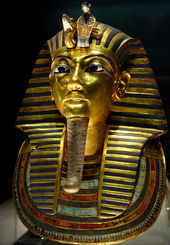
© Unkown
Al-Awsat- Tutankhamen, the golden pharaoh, continues to bedazzle the Cairo, Asharq entire world. The discovery of King Tut's tomb, which took place around 85 years ago, remains the most important archeological discovery of our time, not just in Egypt, but in the entire world.
This was the first time that a royal tomb of one of Egypt's pharaohs was discovered untouched, and with the complete set of funeral furniture which was buried with the King. In addition to this, there was also the treasures and jewelry which blinded anybody who set eyes on them. It is hard to believe that these beautifully crafted and delicate jewels were made over 3,500 years ago.
Comment: Will this be yet another piece of evidence ignored by the mainstream media about the abiotic origins of oil?